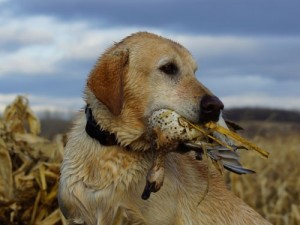The first cold front of the season ignited migration activity across the north this past week. Early migrating ducks, including, teal, wood ducks, shovelers and pintail numbers were on the rise in many northern states in the Central and Mississippi Flyways. Canada goose numbers increased dramatically in northern Mississippi Flyway and the first flights of White fronted geese are being reported in the Central Flyway.
Hello folks, and, as always, welcome to Waterfowler.com.
As drought conditions continue to persist across the central and western portions of the nation, hunter success continues to suffer in many areas of the north. Even hunters with huge portfolio of access areas are finding themselves high and dry this season, with little relief in sight. Public areas that are holding significant numbers of birds are also attracting a significant number of hunters and competition for space and birds is fierce in many areas.
In short, hunting is difficult – at best. Even those with managed water are fining it difficult to attract a fair number of fowl. As should be expected, pumping a few acres of water into a dead zone of duck activity will do little to attract birds if you are not near a large impoundment that is holding a significant number of ducks and geese.
While hunters in the Central and Mississippi Flyways hold hope for rain to salvage the season, the 3-month outlook from the Climate Prediction Center does little to reinforce that hope. Hunters who wish to do more than look to the north for rain and ducks, will make a commitment to mobility.
Areas holding ducks are holding good to excellent numbers. Hunters willing to scout and toss traditional thinking out the window can create opportunity where little appears to exist. For example, ducks on large bodies of water learn quickly that the majority of hunters and shooting occur in the morning – and thus, shift their activity to the afternoons, evenings and after dark. If your morning hunts are unproductive, be willing to shift to an afternoon or evening hunt to improve your success.
PACIFIC FLYWAY:
Mallard numbers in the northern portion of the flyway are fair for this time of year with widgeon and pintail fair to good. White-fronted goose numbers are on the rise in the Sacramento valley with white goose numbers low. Pintail numbers are on the rise in Utah and to the south, teal numbers continue to build as the migration progresses south. On the east side of the Rockies, duck numbers are below average for this time of year throughout the northern portion of the flyway.
CENTRAL FLYWAY:
Duck and goose numbers improved significantly over the past week throughout the Dakotas as migrants arrived along with the recent cold front. Gadwall numbers increased along with pintail and widgeon as the early migrating species moved in. Teal numbers increased from Kansas to the Gulf Coast as they continued to push south – with mallard numbers remaining good to excellent in Manitoba and Saskatchewan.
MISSISSIPPI FLYWAY:
Despite low hunter success, duck and goose numbers jumped significantly in the far northern states this past weekend as ring-necked ducks and other early migrating species dropped into the lower forty-eight. Drought conditions continue to concentrate birds to major lakes and river systems as the move quickly down the flyway. Wood ducks and teal continued to push south away from the cold and hunting pressure, creating an early lull in the season for many hunters. Canada goose numbers increased from Minnesota to Central Indiana over the past seven days and should provide excellent shooting in states that open in the coming weeks.
ATLANTIC FLYWAY:
Sea duck numbers are on the rise in northern Maine, with wood duck numbers good to excellent throughout the New England states. Pintail, black duck and widgeon numbers are on the rise from Ontario to the Chesapeake Bay with teal numbers slightly above average for this time of year.
Until our next report, plan a youth hunt for the coming season – the future of waterfowl hunting depends on your recruitment.






